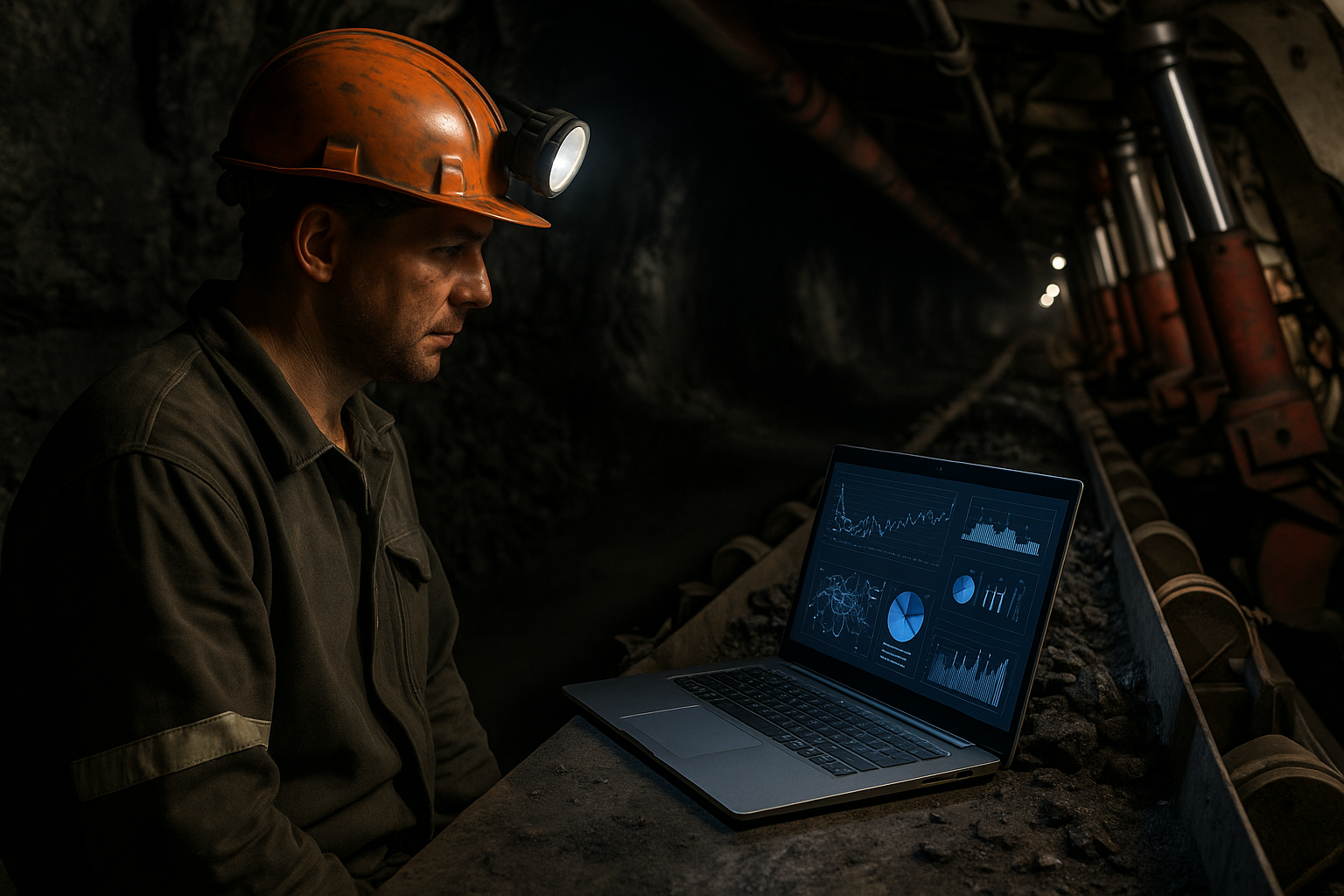From data to safety: Artificial intelligence transforms coal mine risk management
The researchers identify critical limitations that restrict the full realization of AI’s potential in mine safety. A major concern is fragmented data systems, different hazard prediction tools often operate in isolation, without sharing data or communicating across platforms. This lack of integration prevents a unified, cross-hazard early-warning framework.

Coal mining remains a critical but perilous sector, responsible for energy security yet marred by recurrent disasters involving gas explosions, fires, flooding, roof collapses, and coal-dust hazards. In a landmark review of emerging safety technologies, researchers analyze how artificial intelligence (AI) is transforming coal mine disaster prediction.
Their study, titled "Application of Artificial Intelligence in Predicting Coal Mine Disaster Risks: A Review" and published in Sensors, provides the most comprehensive synthesis to date of AI-based tools designed to anticipate and mitigate risks in one of the world's most hazardous industries.
Reimagining risk prediction through AI
The study reveals how advances in AI, from classical machine learning to deep neural networks and large language models, are redefining how mines predict, monitor, and respond to danger.
The authors reviewed a broad range of models, including support vector machines (SVMs), decision trees, random forests, gradient boosting methods, and deep learning architectures such as CNNs, LSTMs, GRUs, and GANs. These methods process massive streams of sensor data collected from gas detectors, temperature probes, microseismic sensors, and video systems installed in modern mines. By learning patterns of instability, gas buildup, or temperature changes, AI models can flag early warning signals long before traditional monitoring systems would.
The review also highlights the emergence of large language models (LLMs) and multi-agent AI systems that go beyond pattern recognition to reason, communicate, and support decision-making. Such systems are being tested for tasks like coordinating emergency responses, synthesizing sensor alerts, and recommending evacuation strategies under uncertainty.
Mapping hazards and technologies
The paper analyses five major categories of mining hazards: gas disasters, mine fires, water inrush events, roof collapses, and coal-dust explosions. Each hazard class is tied to specific sensor indicators and prediction challenges.
In gas-related disasters, including coal and gas outbursts, AI models have been used to predict dangerous concentrations and emission rates. Classical algorithms such as SVMs and ensemble learners remain reliable, but recurrent neural networks like GRUs and LSTMs provide stronger forecasting for dynamic gas variations in real time. However, the authors note persistent issues with interpretability and model transferability across different mining environments.
For mine fires, convolutional and hybrid CNN-LSTM models are being applied to detect spontaneous combustion using data from temperature, oxygen, and hydrocarbon sensors. By fusing multiple indicators, such as CO, CO₂, and CH₄ ratios, AI systems improve early detection accuracy. Some research even explores LLM-driven simulation agents to assist in emergency management and evacuation planning.
Mine water disasters are another area where AI has proven transformative. Deep and attention-based networks have enhanced water source identification and inflow prediction by combining geological, hydrological, and sensor data. Models that employ self-attention mechanisms excel at capturing abrupt inflow changes, improving situational awareness in underground tunnels. The authors recommend advancing toward multimodal data fusion and transfer learning to enhance accuracy in complex terrains.
When it comes to roof disasters, AI models trained on hydraulic support pressures and stress-time series can detect periodic pressure fluctuations that precede collapses. Integrating posture, stress, and seepage data further strengthens predictive accuracy. Meanwhile, for coal-dust hazards, machine learning and lightweight neural networks now predict explosion likelihood and monitor occupational exposure, enabling real-time adjustments to ventilation systems and dust suppression protocols.
Challenges, gaps, and the path forward
The researchers identify critical limitations that restrict the full realization of AI's potential in mine safety. A major concern is fragmented data systems, different hazard prediction tools often operate in isolation, without sharing data or communicating across platforms. This lack of integration prevents a unified, cross-hazard early-warning framework.
Another problem lies in the weak coupling between physical models of mine processes and purely data-driven algorithms. Many AI systems lack grounding in the underlying physics of gas flow, heat transfer, and rock mechanics, which limits their reliability when encountering new or unseen scenarios. The researchers call for the integration of physics-informed and knowledge-augmented AI, combining mechanistic insights with data analytics to ensure interpretability and robustness.
Data scarcity also remains a significant hurdle. Catastrophic mining events are rare, making training data for high-accuracy models difficult to obtain. The study points to synthetic data generation via generative adversarial networks (GANs) as a promising solution, helping balance datasets and improve model generalization. However, validating synthetic data against real-world conditions requires further work.
On the deployment front, practical barriers such as sensor accuracy, latency, and limited computing resources in underground environments continue to pose operational challenges. Many algorithms demand more computational power and connectivity than current mine infrastructures can provide. As a result, the authors advocate for edge-AI systems, lightweight models that run directly on local devices without relying on external servers, to ensure timely alerts even when network access is unstable.
Another major limitation is the lack of trustworthy AI frameworks. Few studies address interpretability, reliability, or regulatory validation, all of which are essential for safety-critical adoption. The researchers stress the importance of transparent algorithms and explainable models that mine operators and regulators can audit and trust.
Toward smart, safe, and sustainable mining
The authors envision a new generation of intelligent mine safety ecosystems that would integrate foundation models, digital twins, and collaborative AI agents to enable real-time, adaptive risk management. Instead of treating each hazard separately, the future of mine safety could rely on unified systems capable of continuous sensing, reasoning, and communication.
The review calls for more federated learning approaches that allow multiple mines to train shared AI models without exchanging sensitive data. This could greatly expand the diversity of datasets while maintaining privacy and operational security. Additionally, collaboration between mining engineers, AI scientists, and policymakers will be essential to standardize data formats and regulatory frameworks for AI deployment in industrial safety.
- FIRST PUBLISHED IN:
- Devdiscourse








